Hardware startups have a serious disadvantage over SaaS companies: Once you ship, it’s somewhere in the hard-to-impossible range to make changes to the product. That means you’d best get it right. But knowing what to ship can be challenging. Prelaunch.com first caught my eye at CES in Las Vegas this year, where the company had a “wall of flops”: products that were manufactured but didn’t find commercial success.
Earlier this year, the company raised a $1.5 million seed round, and I already talked with the company’s founder about what it takes to de-risk hardware products. As part of that interview, I managed to talk the team into letting me take a closer look at the pitch deck it used to raise the $1.5 million.
We’re looking for more unique pitch decks to tear down, so if you want to submit your own, here’s how you can do that.
Slides in this deck
- Cover slide
- Summary slide
- Market context slide
- Problem slide
- Solution slide
- Problem with the existing solution slide
- Product slide 1
- Results slide
- Product slide 2
- Product slide 3
- Product slide 4
- Vision slide
- Value prop slide
- Traction and metrics slide
- Business model and pricing slide
- Market trends slide
- Why now slide
- Team slide
- The Ask slide
- Contact us slide
Three things to love
Prelaunch obviously has a very clear idea of where it wants to go, and it presents that beautifully in its slide deck. At the same time, the company makes some pretty elementary mistakes, and the deck is missing some important information. Still, there’s a lot to love here, so let’s dive in and take a look.
Share the win
On Slide 8, the company shows the measured efficacy of what it does, essentially suggesting that it has developed a crystal ball of sorts.
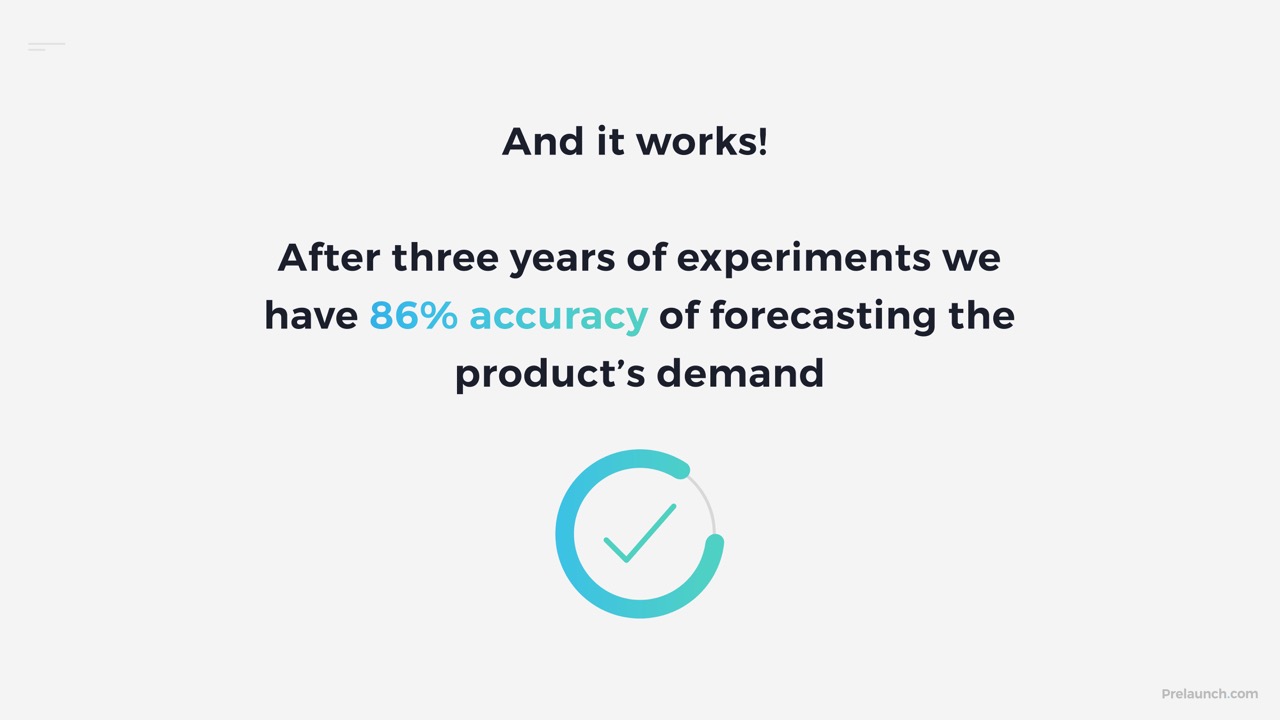
In Slides 1-7, Prelaunch sets up its problem space and the challenges it is addressing in the hardware ecosystem. On this slide, it brings it full circle, claiming that what it is doing works extremely well. To hardware manufacturers and the people who know how they work, an 86% accuracy of product demand forecasting is as good as it gets; it may as well be a crystal ball. This is an incredibly powerful claim that goes a long way toward confirming that the company is building something that may well be an indispensable tool for hardware manufacturers.
When you are putting together your own slide deck, think about whether you have a similar metric you can refer to, one that illustrates how much better your customers’ lives will be if they use your product. It’s a great storytelling tool — if it stands up to scrutiny.
A bold vision
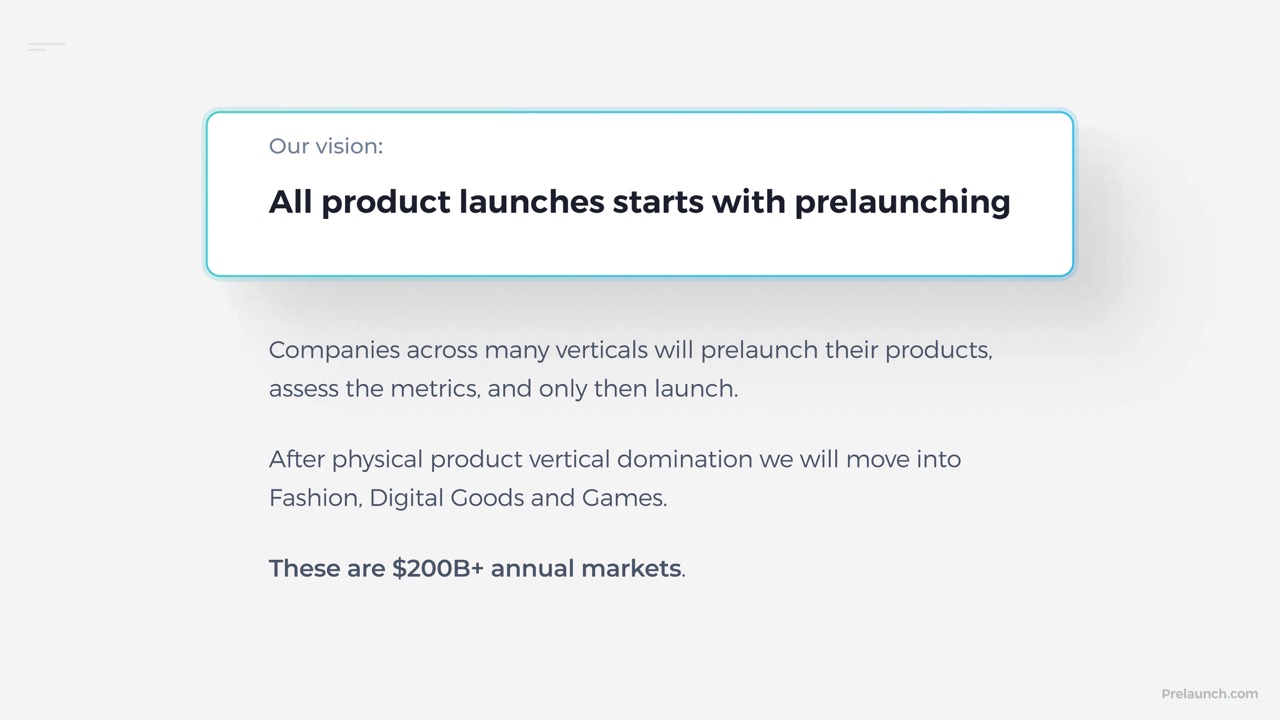
Market sizing is always an interesting challenge for startups, but Prelaunch’s vision, combined with its claims around how much it can de-risk hardware manufacturing, makes for a compelling story. Of course, many product launches do start with a market research phase already, but Prelaunch aims to put the expensive market research tools available to high-end product manufacturers in the hands of everyone, including startups, mom-and-pop manufacturing operators and people who are interested in doing human-informed product design.
Show, don’t tell
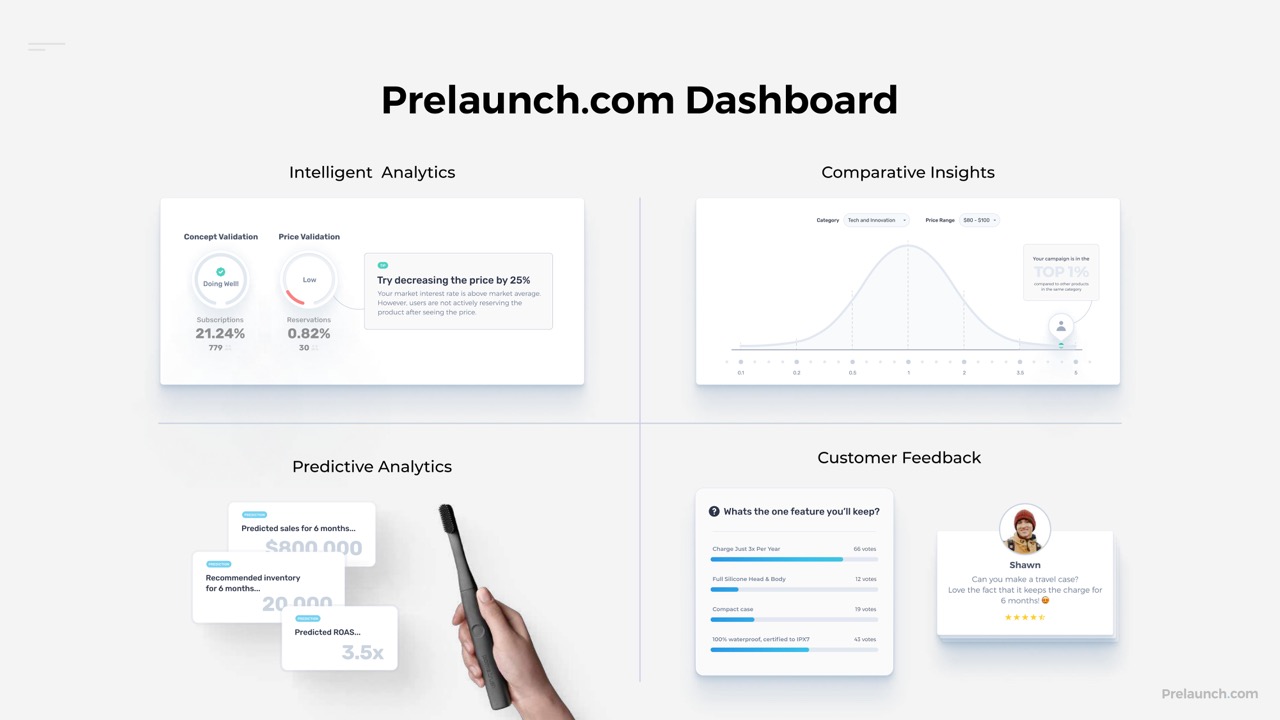
Prelaunch uses four slides to show different aspects of its product, summarizing the analytics, reporting and a large part of the feature set that’s available within the company’s product. But it was able to do this with a simple set of screenshots, rather than overloading the slide with words.
This part of the story is very show-don’t-tell, and it describes a couple of important things about the company and its product: It’s able to create complex dashboards that convey large amounts of information simply, and it’s able to build a product that’s intuitive and actionable.
Traction galore!
I usually only add three things I like, but I had to include this slide as well …
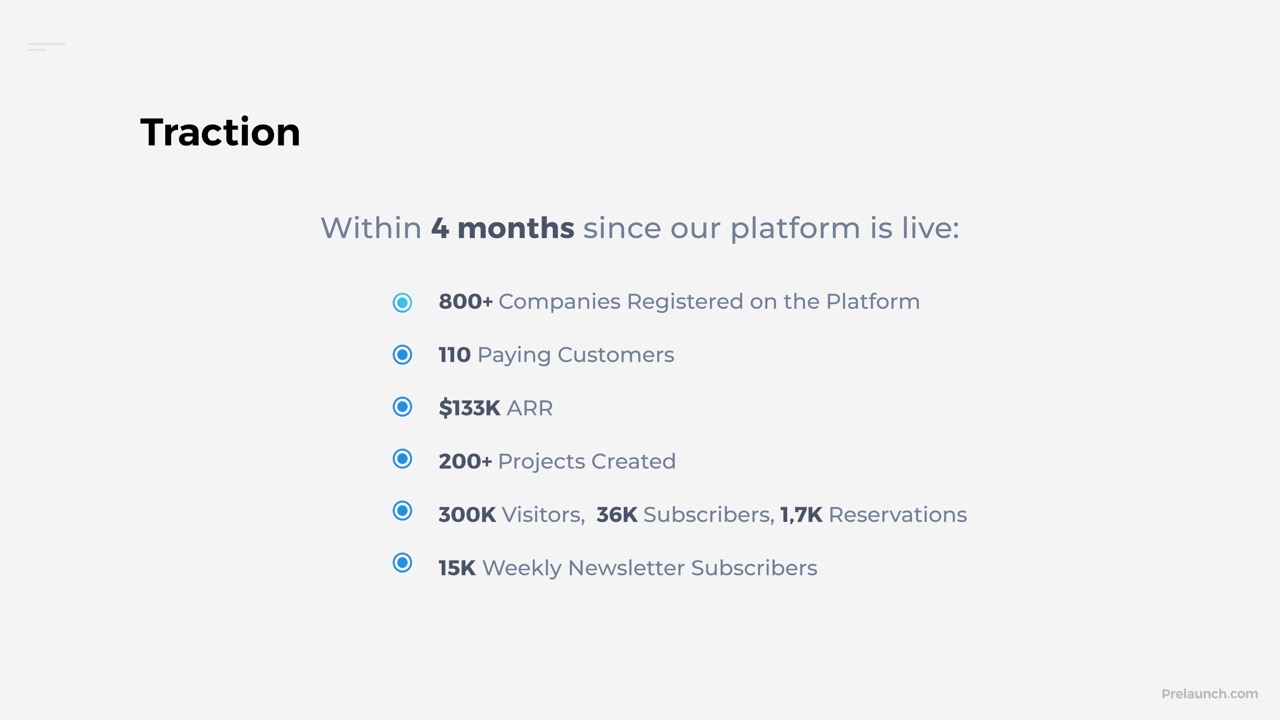
There’s one slide that will trump everything else that’s going on in the business, and that’s traction. An awful team that has traction is not an awful team. A dreadful product that is making revenue is not a dreadful product. I’m surprised the Prelaunch team waited until slide 14 to tout these numbers. But $133,000 ARR after only four months is incredibly impressive, and although the 800 companies registered could be a vanity metric, if those are all in-market buyers for a product like Prelaunch, that’s a beefy, promising pipeline.
Three things that could be improved
There’s always room for improvement, and Prelaunch missed some opportunities within its pitch deck.
Nooo! Lose the valuation!
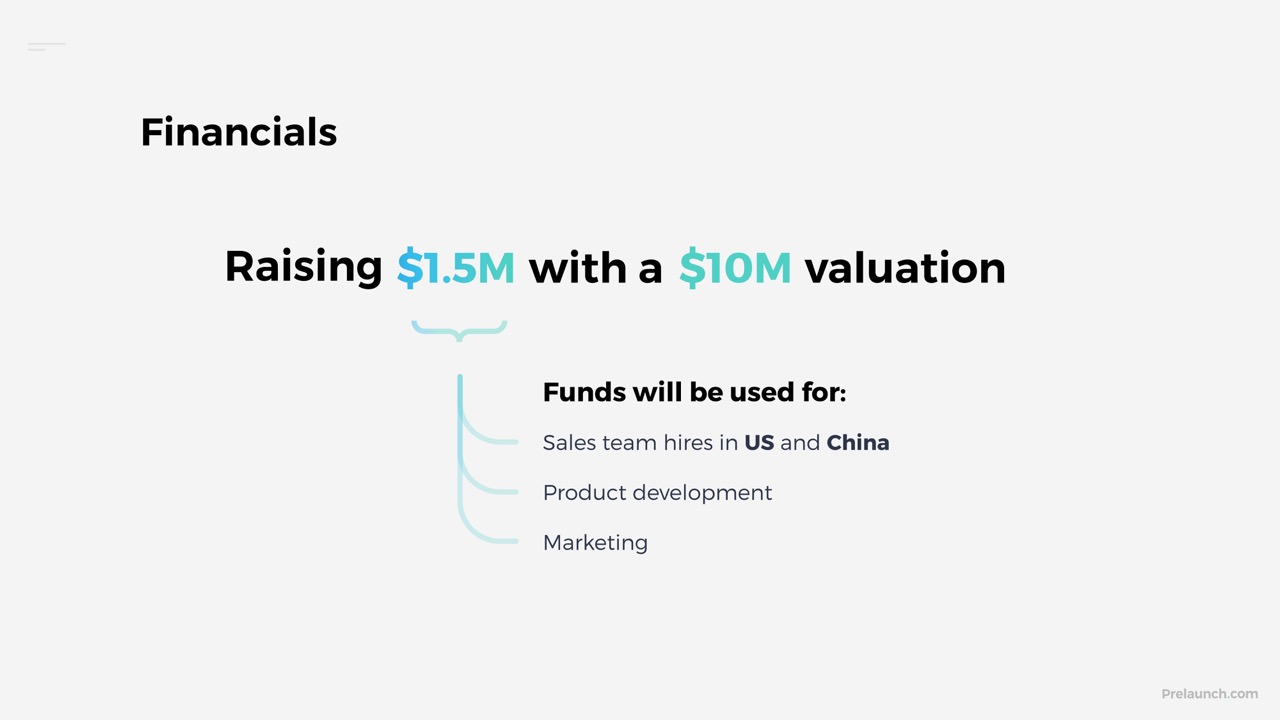
Prelaunch included a clear “ask” slide in its deck — 99% of founders get that slide wrong — but it leaves a lot to be desired. For one thing, it’s rarely productive to list your valuation front and center as part of a fundraise. It makes sense to have a target valuation based on your hopes and dreams, but many founders either get too ambitious or fail to leave the door open to investors getting into a bidding war.
There are a number of challenges with this. For a $1.5 million round, it’s usually easier to raise on a SAFE note and just forget talking about valuations altogether. It’s also not clear from this slide whether it’s a pre-money valuation (which would give the investors 13% equity in the company, and put the post-money at $11.5 million) or a post-money valuation (which would give the investors 15% equity and an $8.5 million pre-money valuation). But overall, it’s just a bad idea to try to negotiate this before you even start talking to potential investors. The only possible exception is if you’ve already found and committed to a lead investor who’s negotiated terms, but in that case, it makes more sense to include the name of the investor and the amount they committed to on this slide.
The other issue with this slide is that the goals are very fuzzy. “Marketing,” “product development” and “hiring”? Yes, of course, that’s why almost everybody raises money. Being more specific about these goals would be better. For example:
- “Grow our top of funnel from 800 companies to 2,000 companies by September 2023” is a measurable, specific marketing goal.
- “Roll out second phase of our product roadmap by October 2023” is a measurable, specific product goal.
- “Hire a four-person sales team in the U.S. and China, and increase our conversion rate from 10% to 15% from our top of funnel leads” is a measurable, specific hiring and sales goal.
Investors know that these are modeled predictions and that the future may look different, but mapping these goals to your operating plan and to the amount of money you need to raise goes a long way in signaling that you’re a believable founder with an implementable plan.
Where’s the competitor slide?
Even if you buy the premise that hardware product development is broken, it’s not true that product developers aren’t currently doing market testing with their ideas. Large corporations have extensive research labs and focus groups. Appliance manufacturer GE spun up FirstBuild to do small-batch experiments and pre-launching of sorts. While crowdfunding may give too little information too late in the product development cycle, it is a competitor of sorts. Omitting a competition slide altogether is not a great move. After all, if you don’t have any competitors at all, it means you don’t have a business.
Think long and hard about how much of the heavy lifting your competitive landscape slide can do for your pitch story. Then craft a thoughtful narrative around that.
Prelaunch kinda-sorta-if-you-squint talks about this early in the deck:
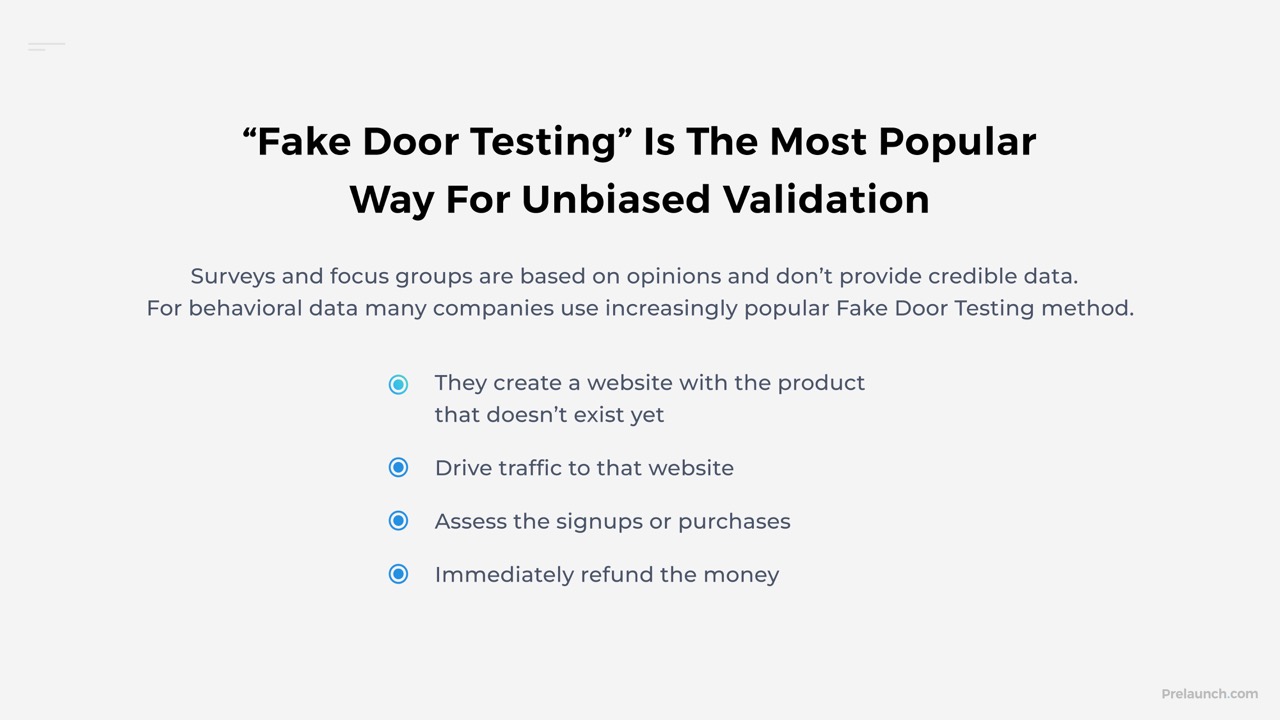
But what the company is describing here is an alternative methodology that it deems subpar rather than talking about specific products or services that help customers deliver this methodology. That would have been a more elegant approach: Show how some of the best “fake door testing” platforms do what they do and why Prelaunch is superior.
Does the business and pricing model need to be this complex?
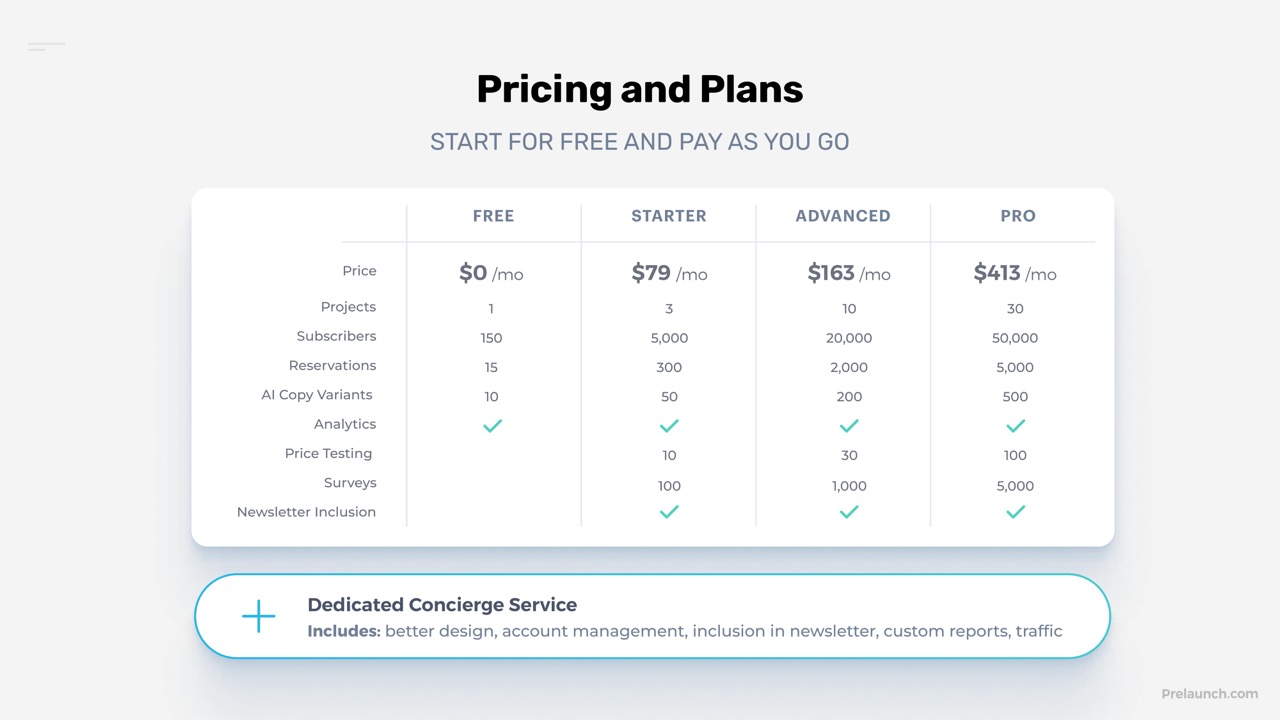
For a company that helps startups develop pricing models as part of its core business offering, it seems pretty ironic that there are four tiers for potential customers here. While the recurring business model is elegant for a SaaS platform, I wonder if it would make more sense to have a per-project pricing on top of a subscription model. In any case, this slide had me scratching my head and wondering how good the platform could possibly be.
It also doesn’t help that the pricing is kind of odd: $163 per month? $413 per month? Those numbers seem pretty random. It’s encouraging to see that the pricing model has evolved a little since this slide-deck screenshot, but if I were an investor, this slide would make me want to pause and dig in: How many subscribers are there at each tier? How many people churn or upgrade their subscriptions? Once you’re asked these types of questions, it means you, as a founder, are losing control of the narrative; you’ll have to defend your growth trajectory and go-to-market strategy rather than spending more time on the narrative you’ve so lovingly crafted.
Craft your story in such a way that it is easy to grok and helps drive the narrative along a single path. In this case, even if there were a business model this complex, I think it might have been possible to instead report what’s happening — what tiers are customers signing up for — rather than presenting this as-is.
The full pitch deck
If you want your own pitch deck teardown featured on TC+, here’s more information. Also, check out all our Pitch Deck Teardowns and other pitching advice, all collected in one handy place for you!































Comment